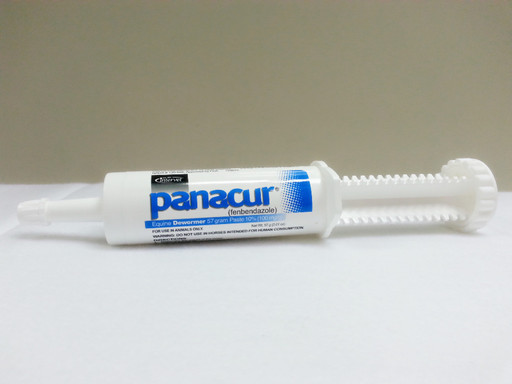

Now please bear with me while I give you the background on this condition, as it is very important in the case of a rescue horse (or any horse with a large quantity of these type of worms).

The use of the wrong type of a wormer in a horse which is badly infested with certain type of worm leads to a usually fatal condition known as Larval Cyathostomosis.
PANACUR FOR HORSES FULL VERSION
The full version of this book is available for download at Bear in mind this is an overview, and for full information, please read Dr Nyland’s book What to Worm Your Horse With, Made Easy This is an extract from Dr Nyland’s book of the chapter on worming. This concise and to the point how-to book also takes the reader through several pictorial case histories. Whatever their circumstances, rescue horses need worming and feed, and these two very things, if not carried out correctly, may harm or even kill the horse. Some may be injured, or have wounds, while others may “only” be skinny. Your fat, shiny, “healthy” horse can also die from an overburden of worms with incorrect worming. Note: This information doesn’t only apply to Rescue Horses. All rights reserved.How to Care for a Rescue Horse: Australian Version ©2022 Merck & Co., Inc., Rahway, NJ, USA and its affiliates. (d/b/a Merck Animal Health), Madison, NJ 07940 Your parasite management plan should be adjusted accordingly based on regular monitoring.įenbendazole (active ingred.) made in: see imprint. A decrease in a drug’s effectiveness over time as calculated by fecal egg count reduction tests may indicate the development of resistance to the dewormer administered. Monitored (for example, with the use of a fecal egg count reduction test or another appropriate Following the use of any dewormer, effectiveness of treatment should be Fecal examinations or other diagnostic tests and parasite management history should be used to determine if the product is appropriate for the herd, prior to the use of any dewormer. Treatment with a dewormer used in conjunction with parasite management practices appropriate to the geographic area and the animal(s) to be treated may slow the development of parasite resistance. Parasite resistance may develop to any dewormer, and has been reported for most classes of dewormers. OTHER WARNINGS: Do not use in horses intended for human consumption. For additional information about adverse drug experience reporting for animal drugs, contact FDA at 1-888-FDAVETS. For customer service, adverse effects reporting, and/or a copy of the SDS, call 1-80. The Safety Data Sheet (SDS) contains more detailed occupational safety information. Underdosing may result in ineffective treatment, and encourage the development of parasite resistance. Ensure each animal receives a complete dose based on a current body weight. The drug may also be administered by stomach tube.ĭo not underdose. Insert nozzle of syringe through the interdental space and deposit the drug on the back of the tongue by depressing the plunger. Directions For UseĪdminister orally by suitable dosing syringe. oncophora), bankrupt worms (Trichostrongylus colubriformis), and nodular worms (Oesophagostomum radiatum).īeef Cattle Only - 4.6 mg/lb (10 mg/kg): for the treatment and control of: Stomach worms (4th stage inhibited larvae): Ostertagia ostertagi (Type II Ostertagiasis) Tapeworms: Moniezia benedeni. 4.6 mg/lb (10 mg/kg): for the treatment and control of ascarids (Parascaris equorum).īeef and Dairy Cattle - 2.3 mg/lb (5 mg/kg): for the treatment and control of: Lungworms: Adult Dictyocaulus viviparus Stomach worms: Adult brown stomach worms (Ostertagia ostertagi), Adult and fourth stage larvae barberpole worms (Haemonchus contortus & H. placei), and Adult and fourth stage larvae small stomach worms (Trichostrongylus axei) Intestinal worms (Adult and fourth stage larvae): hookworms (Bunostomum phlebotomum), thread-necked intestinal worms (Nematodirus helvetianus), small intestinal worms (Cooperia punctata & C. vulgaris, Triodontophorus spp.), small strongyles (Cyathostomum spp., Cylicocyclus spp., Cylicostephanus spp., Cylicodontophorus spp.), and pinworms (Oxyuris equi). Horses -2.3 mg/lb (5 mg/kg): for the treatment and control of large strongyles (Strongylus edentatus, S. Panacur Horse Dewormer Suspension 10% Cautionįederal law restricts this drug to use by or on the order of a licensed veterinarian. A withdrawal period has not been established for this product in pre-ruminating calves. Not for use in beef calves less than 2 months of age, dairy calves, and veal calves. Cattle must not be slaughtered for human consumption within 8 days following last treatment with this drug product. Withdrawal Periods and Residue Warnings: Milk taken from cows during treatment and for 48 hours after the last treatment must not be used for human consumption.


 0 kommentar(er)
0 kommentar(er)
